The heads-up to getting started with smart home lighting
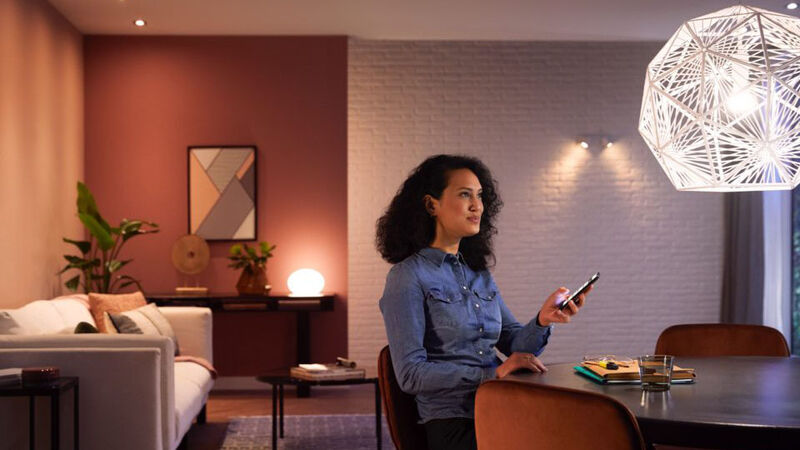
Getting up and running with Philips Hue lighting is quick and easy. Pic: Signify/Philips.
Over the last decade I’ve been building up my collection of connected and smart devices and while I still have a long way to go, it’s proof that you don’t need to do it overnight. You can add, change and expand your smart home as you see fit or as budget allows.
My first smart device was a LED bulb and this is still my favourite and most practical area of my smart home.
Over the last couple of months, I’ve installed and been using the Philip Hue starter kit along with a couple of their lighting fittings. They’ve got a massive range from smart lighting bulbs and accessories but if you’re just starting your journey then the starter kit is a great place to begin.
The smart lightbulb isn’t so simple but it still connects to a light fitting in the same way it did decades ago. In Ireland, we mostly use the standard bayonet (B22) fitting whilst the rest of Europe seem to prefer the screw fit (E27) although not exclusively. Most lamp fittings here use a smaller screw fit (E14) just to confuse matters further. Needless to say, if you’re ordering a bulb for a standard ceiling light fitting, it’s most likely a B22 fitting but check first.
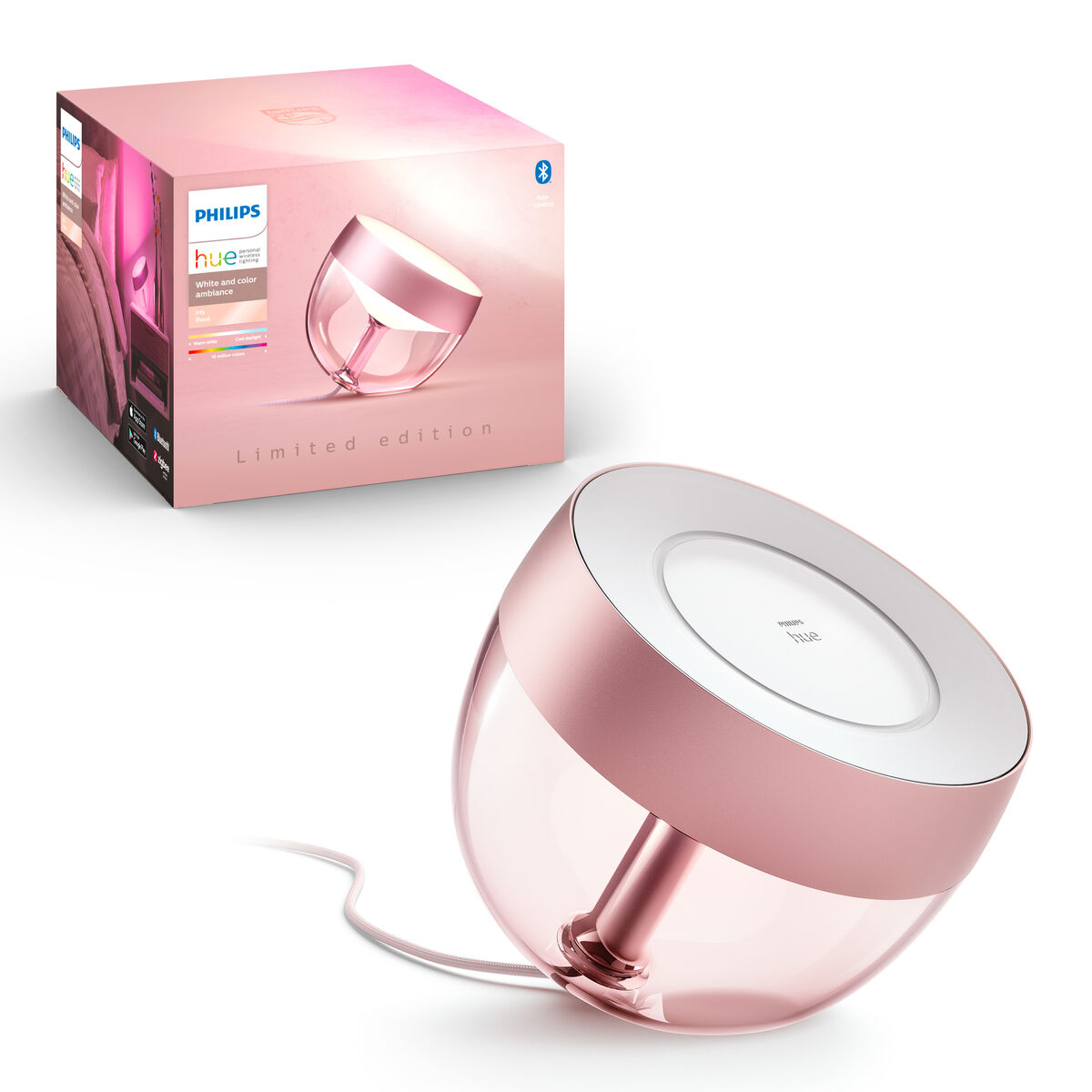
The Philips Hue Starter kit includes two smart bulbs with soft white light and the Hue Bridge. It's a comprehensive kit for customising your home lighting and taking advantage of all of its features ranging from turning the lights on or off to creating advanced routines.
Setup is incredibly straightforward and all the necessary hardware is right in the box to get you up and running. First, you’ll need to plug the Hue Bridge into your wireless router or broadband modem using the supplied network cable. The Bridge also needs to be plugged in all of the time using the separate power adaptor. Once connected you’ll need to install and launch the Philips Hue app on your smartphone. This will instruct you on a step-by-step sequence to get it onto your home network. Once it’s connected, you can use the app to discover any new bulbs powered on in the vicinity.
The Philips system uses an open-source protocol called Zigbee so technically, you don’t actually need the hub. For example, you can use some Alexa devices which have a built-in Zigbee hub to enable your Hue bulbs, but you won’t get the full array of features this way. In fact, many of the newer Hue bulbs come with Bluetooth to communicate directly with your smartphone or some accessories but again, you won’t get the full experience.
Crucially, the Philip Hue system works with all the main voice assistants including Siri, Google and Amazon Alexa.
The standard bulbs that come in the Starter kit are white, dimmable bulbs that you can change the colour temperature from cold to warm. These are far from basic though since they can be controlled from your voice assistant or smartphone using the Hue app.
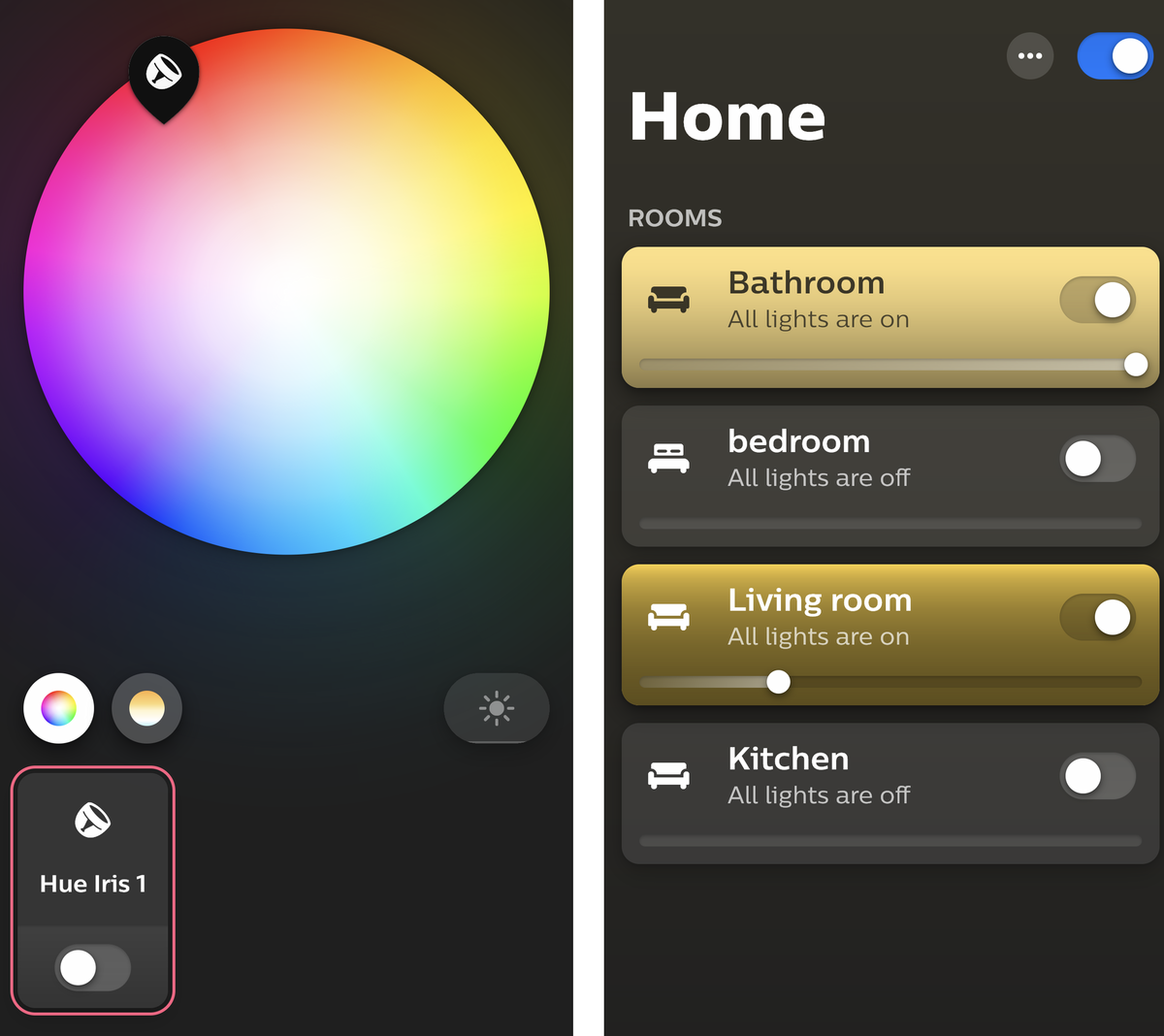
The app makes it incredibly easy to control all of your lighting. You can name each light and group them into ‘rooms’ such as kitchen, living room or bedroom. A quick tap in the app will turn off a light or a simple swipe left or right on the slider will brighten or dim a light.
When enabled, you can also ask your voice assistant to do the same functions with voice commands.
However, the real power of the lighting system is when you create automation such as gradually brightening a selected light in the morning as your alarm is going off to gently awaken you into a new day. Or, turn certain lights on automatically when you come near your house as you arrive home. You can also set timers on lights so it will look like there’s someone at home when you’re away.
I like to set routines in Alexa, Siri or Google to trigger a mood. For example, when watching TV I like soft lighting with all the main lights off, so I created a routine with a catchphrase to enable it. One of my favourites is when I say “goodnight” all the lights in the house turn off.

Setting a scene is a great way to match the colour theme in a room or set a mood. The colour option uses a colour wheel to select a colour. Once you've finished choosing your colour, you can save your scene in the app by clicking the checkmark button at the top.
Scenes are excellent ways to save your preset settings and quickly choose between them as favourites.
A new update to the Hue App now comes with integrated syncing of your Hue lights to your entertainment. If you have a Spotify account, you can link it to make your lights react to your music, matching not just the beat but the genre and mood, too. While this may not be for everyone, it’s a nice bonus to have.
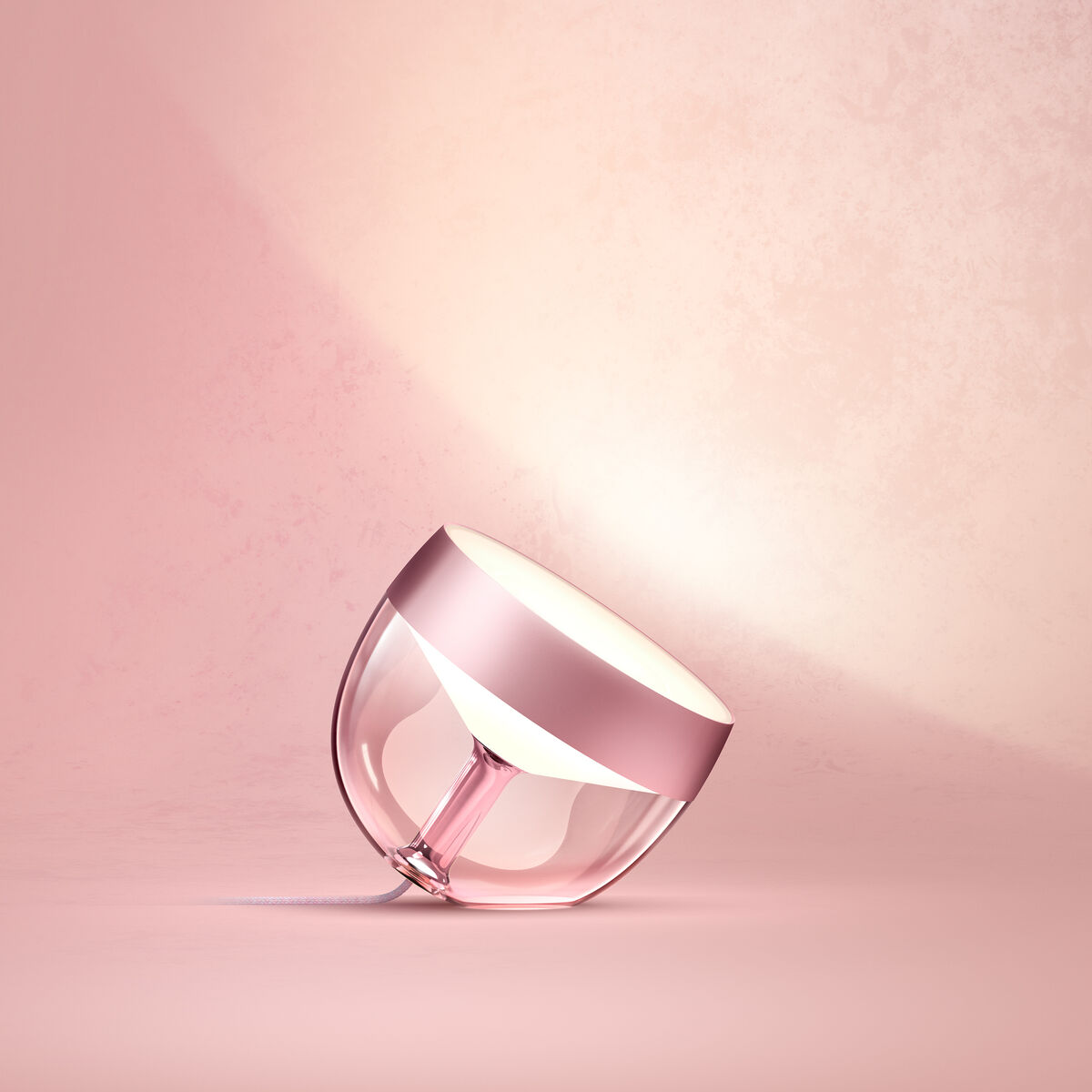
Of course, the basic white lights are great but to really create a mood, colour lights are the way to go. During my testing, I used a futuristic-looking lamp called the Philips Iris. This is pretty cool and features a clear plastic base, an aluminium inner tube, a light-diffusing cover, and a braided power cord — available in black or white. It's designed to be used as a colourful backlight with the lamp facing a wall. I like it facing out since the light is so soft and you can choose any of the 16-million colours available via the app. It has a maximum brightness of 570 lumens (white) but can also get incredibly dim. It has a white temperature range of 2,000K to 6,500K and a 25,000-hour rated lifespan.
You can also buy an individual colour or white light bulbs to replace existing bulbs to expand your smart home lighting system at any stage and organise them by room.
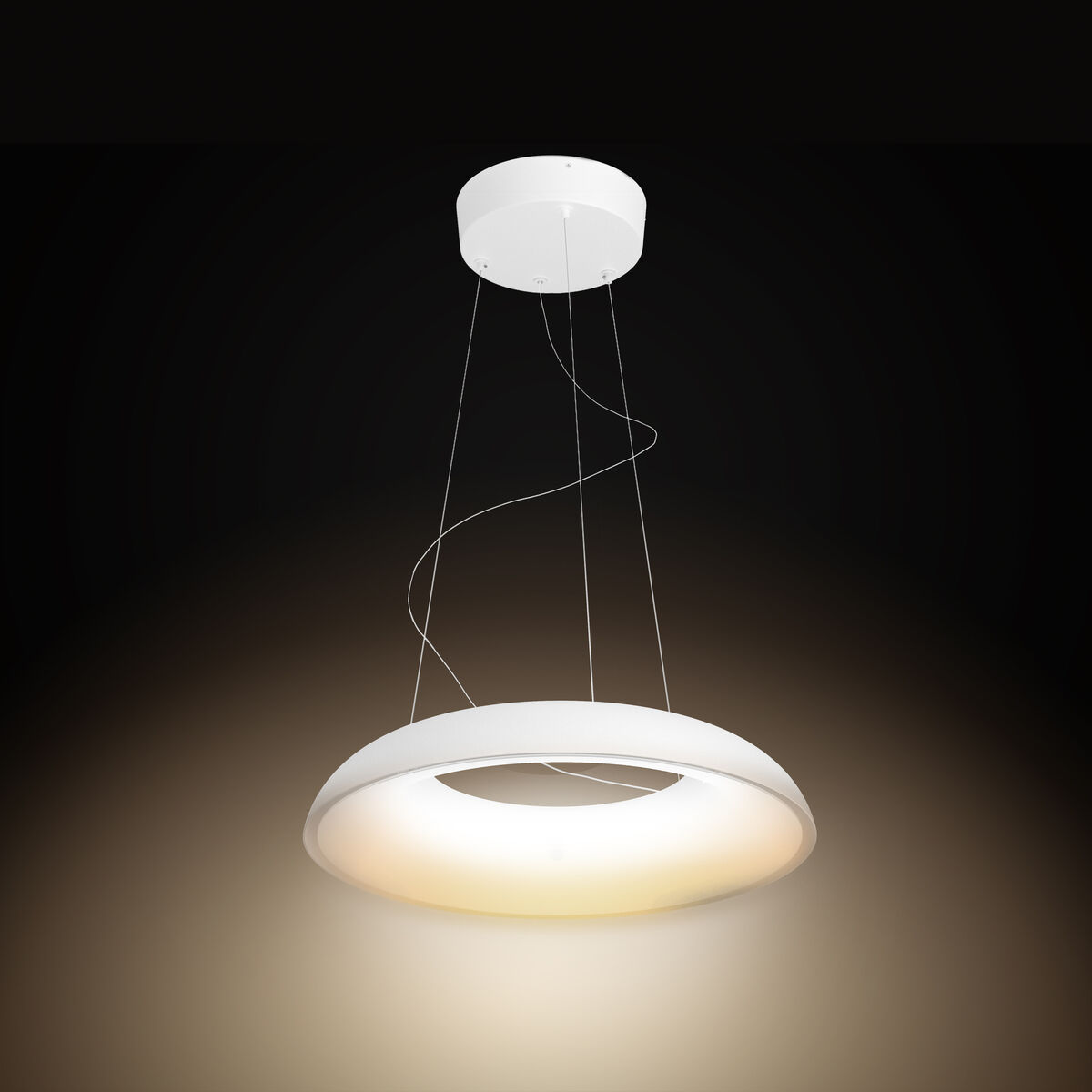
I also tested the Philips Ambient Pendant Amaze, which is primarily designed to be used in a kitchen. It’s ideally positioned over a dining tablet as it hangs via three wires from a base that is fixed to the ceiling. The wires are easily adjustable and the power cable going from the base to the light can also be shortened without cutting, to suit your height preference.
The Amaze has Bluetooth built-in and comes with the Hue remote dimmer switch. The latter can be used anywhere as long as it’s in Bluetooth range and comes with a magnetic holder for the remote that you can fix to a wall for safekeeping.
The big advantage of the remote is that you can use it as a standard wall switch if you like (you still need to keep the main light switch to the on position). Using the remote with the Amaze you can turn on/off the light, control dimming as well as toggle between the four different temperature settings ranging from warm to a bright daylight temp.
If you don’t have a Philips Hue Bridge you can still use the Philip Hue Bluetooth app to control many of the same functions. This also works with the Iris lamp and other Hue devices that come with Bluetooth built-in. However, if you have the bridge then you can also use that as an extra control as well as Alexa and Google integration.
It’s worth noting that the remote dimmer switch will work with other Philips Hue Bulbs and if you connect it to a hub, you can use it with up to 10 Hue bulbs.
The Philips Hue system by Signify is extensive and works well with all the main voice assistants which are how I like to control my lighting most of the time. There are lots of accessories too including motion sensors, remotes and more to further enhance the system beyond just using your voice. The best part is that you can start with just a bulb and build from there.
CONNECT WITH US TODAY
Be the first to know the latest news and updates











